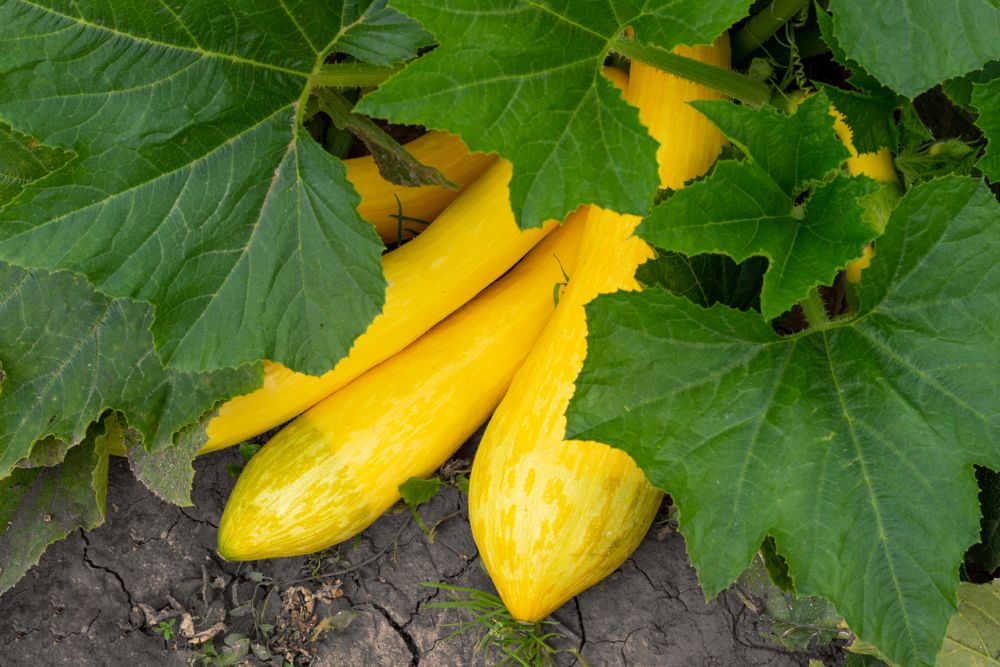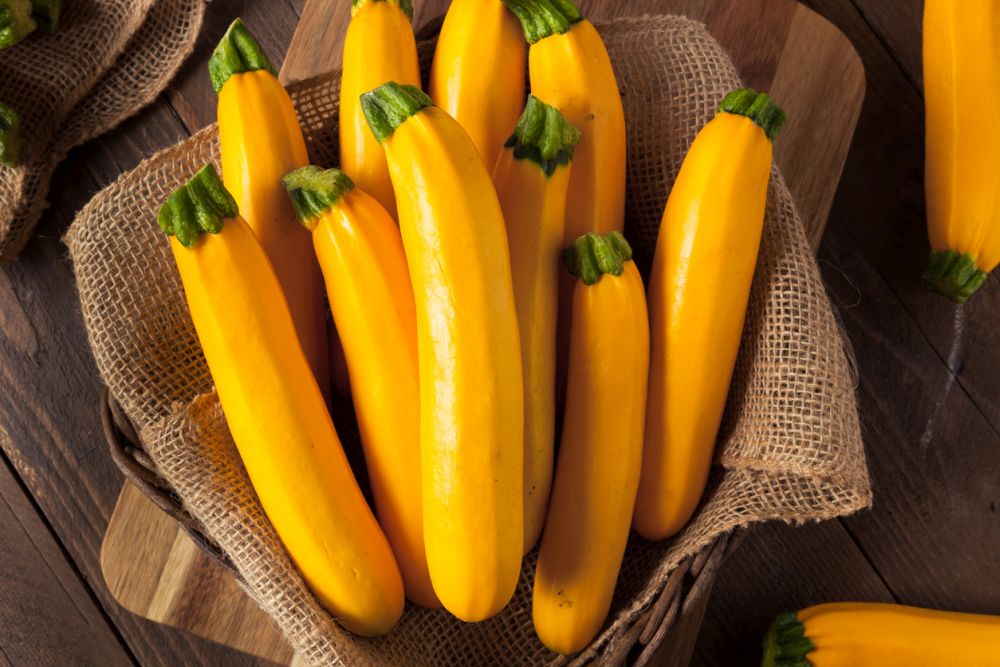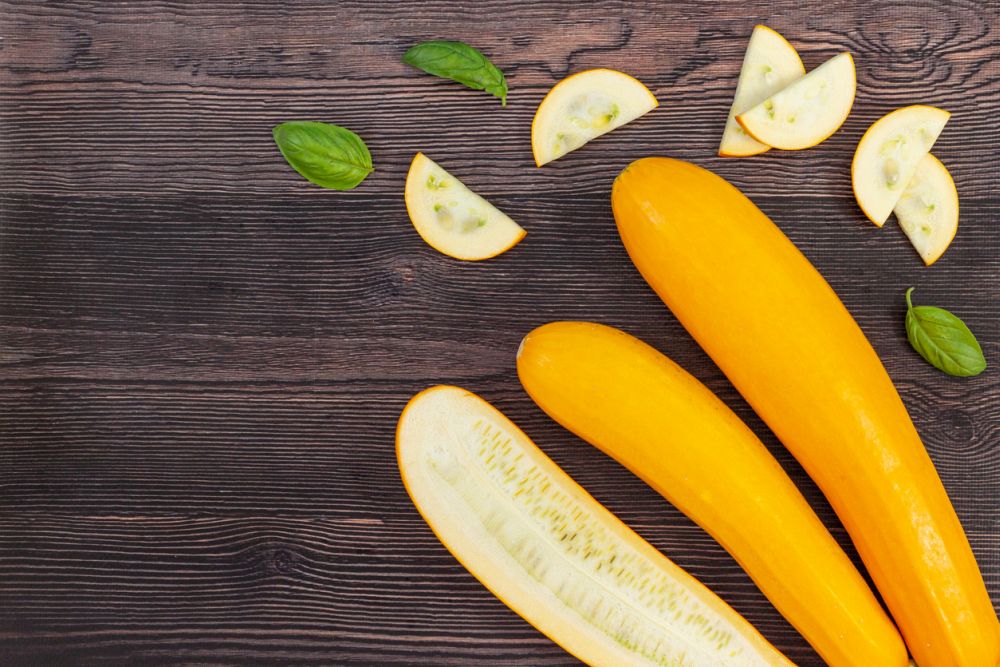Golden Zucchini Care: How To Grow And Harvest Golden Zucchini
The golden zucchini is more than just another zucchini with fancy skin color. It’s as sweet as it looks and makes some of the nicest zoodles you can come across. And while golden zucchinis are readily available in any grocery store along with their green cousins, there’s nothing like growing your own veggies in the garden and enjoying the fresh fruits of your labor.
But that’s not the only reason you’d want to grow the golden zucchini instead of just buying it. There are many varieties for this sweet veggie, and the only way you can try out those rare varieties in your recipes is if you grow them yourself. Read on to find out about those delicious zucchini varieties, how to grow them, and how to care for and harvest this golden veggie.
Golden Zucchini at a Glance
A member of the Cucurbitaceae family, the golden zucchini is actually a squash but with unique skin color. Although squash itself has a long history and goes back 7000 years, golden zucchini itself is a hybrid veggie developed with the goal of improving the taste, disease resistance, and nutritious values of the regular zucchini.
The word zucchini comes from the Italian ‘zucca,’ which means marrow. In fact, the veggie zucchini was first cultivated in Milan, Italy, in the 19th century. From there, it spread to the rest of the world. But the golden zucchini grows best in USDA zones 3 to 9 since it has more tolerance for cold or temperate weather conditions than hot ones. The size of the vine varies widely depending on the variety you grow.
But with their crop abundance, you’ll probably just need to grow a few vines in your garden. In the right conditions and when pollination is done right, you can have enough golden zucchinis to keep you stocked. We will discuss the pollination requirements of golden zucchini below. But first, we need to know about the different varieties you can grow.
Golen Zucchini Varieties
As you might have expected, Italian horticulturalists didn’t stop with the first golden zucchini hybrid they have developed. Far from it. They kept trying to develop better cultivars. Ones that could resist diseases have better tastes, and more nutrition. The result was a wide plethora of golden zucchini varieties that are ready to grow in any garden. And while you will not easily find many of these varieties in the green section of the grocery store, you can get the seeds online and grow them yourself. Here are some of the best golden zucchini varieties to plant.
- Fort Knox Hybrid: A medium-size cultivar that grows about 5 feet wide and 2 feet high. The fruits are usually large, and you can start to harvest them only when they reach about 10 inches long. However, they retain their sweet flavors even at this size, and their flesh is smooth and yellowish under the golden skin.
- Golden Egg Hybrid: An aptly named hybrid with a short and squat fruit that looks like an oversized yellow egg. In addition, this cultivar is ready to harvest after only 41 days from the time you plant it. This makes it one of the fastest-growing zucchini hybrids. It grows to about 6 feet across and tends to keep growing as long there’s space around it.
- Rheinau Gold: A product of Switzerland, this hybrid has thin and long fruits with prominent ribs outlining their slender bodies. You can start harvesting the fruits about 50 days in. Their harvest season goes on for several weeks. However, it needs lots of bees and pollinators to visit the flowers more than once. So you need to grow flowers to attract pollinators to your garden.
- Golden Delight: Another fast-growing hybrid that only needs 50 days to mature. You should pick the fruits when they’re small since they lose their sweet taste and rich flavors as they grow bigger. This hybrid has a high tolerance for high temperatures and humidity levels.
How to Grow Golden Zucchini
To grow golden zucchini in your garden, you’ll need seeds. It’s the best way to start this veggie at home. You can order the seeds online, which allows you to choose the variety you want to grow at this time. Once you have the seeds, you’re only a few weeks away from your first golden zucchini crop. Here’s how to grow this delicious veggie in easy steps.
- Choose a sunny spot that gets anything between 6 to 8 hours of sunlight every day. There should be enough space for companion plants such as marigolds to attract pollinators.
- Make sure you haven’t grown zucchini in this spot for the last couple of years to avoid soil degradation.
- Break the topsoil with a spade to loosen it up and mix in about 2 inches of aged manure or organic compost.
- Build small hills to grow the vines and space them 6 feet apart.
- Dig a hole for every couple of seeds. The hole should be about 1 inch deep.
- Drop two seeds in each hole and keep about 2 feet between each hole to allow the vines to grow.
- Cover the holes with soil but don’t pack it. Water the soil immediately.
- Place a glass jar on top of each hole to protect the seeds against chilly winds.
- Don’t let the soil go dry. Keep it moist until the seeds germinate.
- After about 7 to 10 days, the seeds will sprout.
- Keep the glass jar as a protective cover until the seedlings are 4 inches long and the air temperature is above 65 degrees Fahrenheit.
- Thin out the seedlings, keeping only the healthy ones.
- Cover the soil with a thick layer of mulch to maintain the moisture and protect the vines against weeds and pests.
Golden Zucchini Care
As the golden zucchini plants start to grow, they will keep you busy with all the feeding, watering, and pollinating. Fending off the succulent fruits against pests and diseases is another time-consuming task that you have to carry without delay.
Light and Temperature
Growing in the Mediterranean, golden zucchini is accustomed to bright sunlight all day. On average, the plants need about 6 hours of sun every day. You should wait for the temperature to rise above 70 degrees before you start the seeds. If you want to get a head start, then you can either start them indoors or in a greenhouse. Otherwise, you can plant them directly in the garden but cover the seedlings with a glass jar or a transparent plastic container. Keep this cover on top of the seedlings from the moment they emerge out of the ground until the temperature goes above 65 degrees Fahrenheit.
Water
Although golden zucchini doesn’t like to get its feet wet, it still prefers the soil to be evenly moist throughout. It only needs about 1 inch of water every week, but that amount should be applied about twice a week. Once the top one inch of soil is dry, that’s your cue to get the soil moist again. Deep watering is not recommended with these sensitive plants. So aim for shallow irrigation that doesn’t touch the leaves or vines. And to help you maintain the moisture in the soil, spread a 2-inch layer of mulch. It will also prevent the spread of weeds that compete with the zucchini plants over nutrients and moisture in the soil.
Fertilizer
You need to prepare the soil in advance before you even start the seeds of golden zucchini. This is a heavy feeder that only thrives in rich soil with an abundance of organic materials. Besides the aged manure you mixed into the soil before planting the seeds, you also need to be handy with your fertilizing. The leaves of the plant will turn pale, and the vines wilt if the soil has a nutrient deficiency. Apply more organic compost or liquid fish fertilizer before you irrigate the plants. Fish fertilizer is high in phosphorus which the vines need to grow flowers. A nitrogen-rich fertilizer will improve the plant’s growth and overall resistance to diseases.
Pollination
It’s not often that we talk about pollination as part of the care of plants. That’s because this delicate task is often taken care of by nature and the array of pollinators that swarm your garden. But in the case of golden zucchini, pollination can become a serious issue with grave consequences on the crop you get that year. Each plant grows both male and female flowers. The female zucchini flowers have a small cup at the bottom, while the male flowers have a long stem. You’ll need the bees and other pollinators to visit first the male flower then the female flower in that order for pollination to be successful. Since you can’t train bees to follow a certain order, you’ll need to have as many pollinators as you can get to ensure that every female flower gets pollinated.
Pests and Diseases
Many pests and diseases attack golden zucchini plants and cause damage to them. But we’ll focus here on the main ones that have a greater impact on the health of the plant and the safety of the crop. Squash vine borers are some of the deadliest pests that cause the stems of the vine to wilt and die. They are larvae of moths and bore into the stems to feed on the sap. You’ll have to make a slit in the stem and remove the larvae manually, then cover the stems with aged manure.
Cucumber beetles feed on the leaves and fruits of the zucchini. They are small yellow insects with brown stripes or spots on their backs. The best way to fight them is to use sticky traps to control these pests.
Calcium deficiency and irregular irrigation patterns cause a common disease called blossom end rot. It causes the flowers at the end of each fruit to wilt and become leathery. Treat the soil with a fertilizer high in calcium to avoid this problem.
Harvesting Golden Zucchini
One thing about golden zucchini, the smaller you harvest the fruits, the tastier they are. In general, you can start picking the golden zucchini fruits once they reach about four inches long and one and a half inches thick. You can wait for them to grow to about 6 inches in some varieties. But if you leave them growing on the plant until they become 10 inches long, they will lose all sweetness, and the seeds inside start to develop.
Golden zucchini is easy to spot among the dense foliage. So lift the leaves and check the fruits growing near the base. Use a sterilized blade to cut one inch of the stem above the fruit as you hold it firmly by the other end.
You can store fresh zucchini in the fridge for up to 2 weeks. However, after the first 5 days from harvesting, their taste and flavors diminish quickly. So it’s better to eat them freshly harvested.


